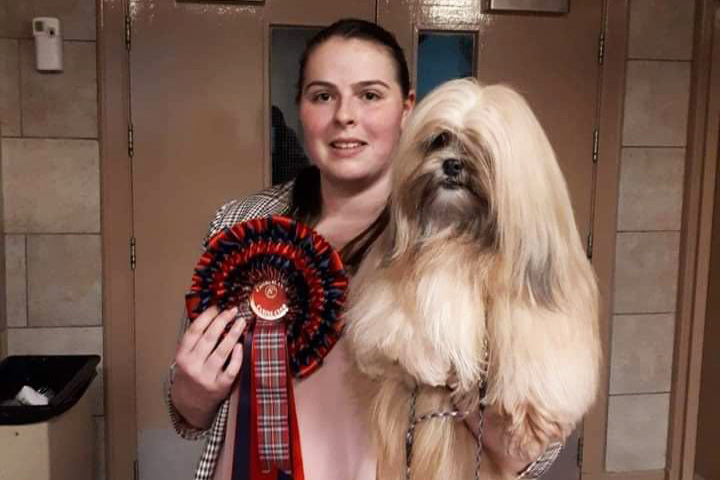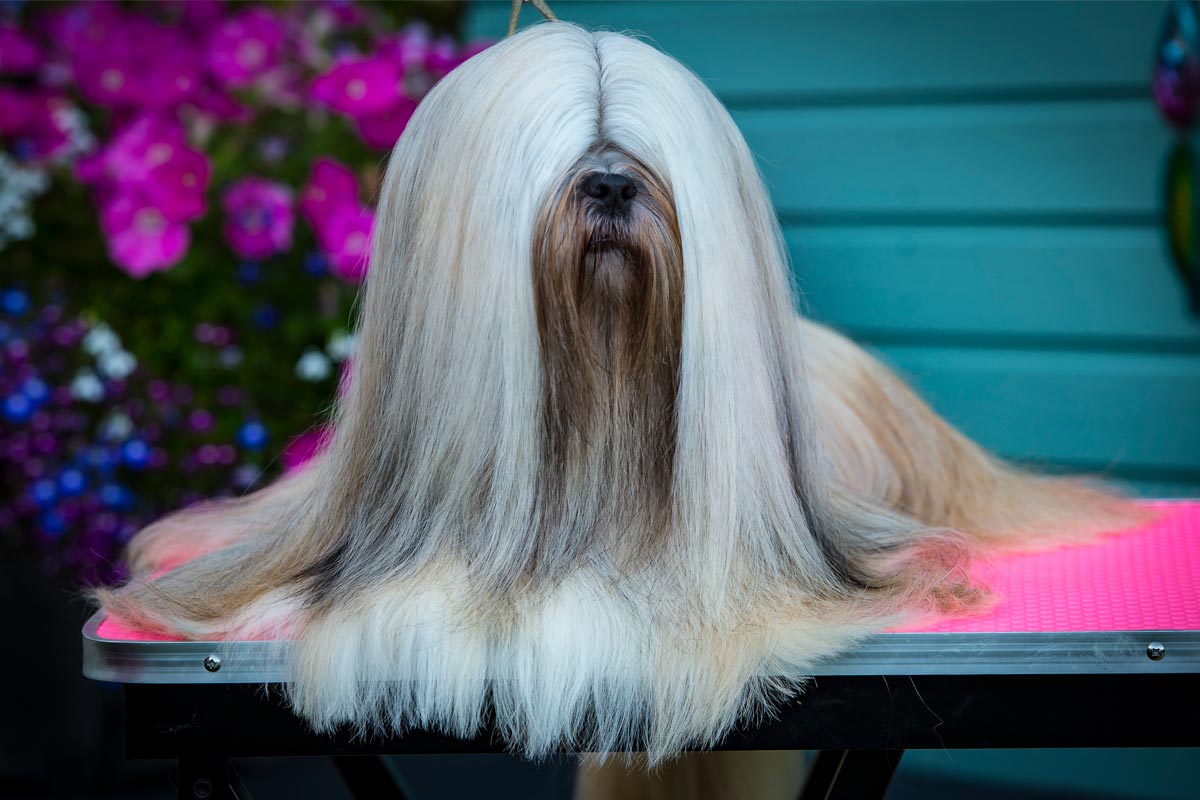
What is a Breed Standard?
A Breed Standard is the guideline which describes the ideal characteristics, temperament and appearance including the correct colour of a breed and ensures that the breed is fit for function. Absolute soundness is essential. Breeders and judges should at all times be careful to avoid obvious conditions or exaggerations which would be detrimental in any way to the health, welfare or soundness of this breed.
Breed Versatility
Many people see the Lhasa Apso as a small lapdog. Although they do love to sit on your lap, they also love to use their brains! Most Apsos LOVE walking. They are usually satisfied with a couple of short walks around the block, but they are more than capable of walking a mile or two. There are many activities that your Lhasa Apso will enjoy taking part in, some popular examples are Agility, KC Good Citizen classes & Showing. Lhasa Apsos also make good therapy dogs (P.A.T dogs).
A great example of a versatile Lhasa Apso is Millie, who’s owner Lucy, originally bought her as a pet. Millie gained her first Good Citizen certificate at only 4 months old, before going on to compete successfully in Agility competitions. Millie had her coat clipped short for the first 5 years of her life when Lucy decided she’d like to have a go at showing her. It took just under 2 years to grow a full coat, and together they’ve won many Best Veteran awards.



Lhasa Apso Breed Standard
General Appearance
Well balanced, sturdy, heavily coated, without excess.
Characteristics
Gay and assertive.
Temperament
Alert, steady but somewhat aloof with strangers.

Head and Skull
Head furnishings with fall over eyes, but not effecting the dog’s ability to see, good whiskers and beard. Skull moderately narrow, falling away behind eyes, not quite flat, but not domed or apple headed. Straight foreface with medium stop. Nose black. Muzzle about 4 cms (11/2 ins), but not square; length from tip of nose roughly one third total length from nose to back of skull.
Eyes
Dark. Medium size, frontally placed, oval, neither large nor full, nor small and sunk. No white showing at base or top.
Ears
Pendant, heavily feathered.
Mouth
Upper incisors close just inside lower i.e. reverse scissor bite. Incisors in a broad and as straight a line as possible. Full dentition desirable.
Neck
Strong and well arched.
Forequarters
Shoulders well laid back. Forelegs straight, heavily furnished with hair.
Body
Length from point of shoulders to point of buttocks greater than height at withers. Ribs extending well back. Level topline. Strong loin. Balanced and compact.
Hindquarters
Well developed with good muscle. Good angulation. Heavily furnished with hair. Hocks when viewed from behind parallel and not too close together.
Feet
Round, cat-like with firm pads. Well feathered.
Tail
High-set, carried well over back but not like a pot-hook. Often a kink at end. Well feathered.
Gait/Movement
Free and jaunty.
Coat
Top coat long, heavy, straight, hard neither woolly nor silky. Moderate undercoat. Coat never impeding action.
Colour
Golden, sandy, honey, dark grizzle, slate, smoke, parti-colour, black, white or brown. All equally acceptable.
Size
Ideal height: dogs: 25cms (10 ins) at shoulders; bitches slightly smaller.
Faults
Any departure from the foregoing points should be considered a fault and the seriousness with which the fault should be regarded should be in exact proportion to its degree and its effect upon the health and welfare of the dog and on the dog’s ability to perform its traditional work.
Note
Male animals should have two apparently normal testicles fully descended into the scrotum.
